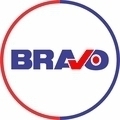Brand Development Process:
1. Market Research and Analysis
- Identify Market Needs: Understand the needs, preferences, and pain points of your target audience.
- Competitive Analysis: Analyze competitors to identify gaps and opportunities in the market.
- Consumer Insights: Gather insights on consumer behavior, trends, and perceptions through surveys, focus groups, and data analysis.
2. Brand Positioning
- Unique Value Proposition (UVP): Define what makes your brand unique and how it solves your audience's problems better than competitors.
- Brand Promise: Clearly articulate the promise your brand makes to its customers.
- Positioning Statement: Create a succinct positioning statement that encapsulates your brand’s essence and market stance.
3. Brand Identity Development
- Brand Name: Choose a memorable, meaningful, and unique name that resonates with your target audience.
- Logo and Visual Identity: Develop a distinctive logo and visual elements (color palette, typography, imagery) that represent your brand’s personality.
- Brand Voice and Tone: Define your brand’s voice and tone to ensure consistent communication across all touchpoints.
4. Brand Messaging Framework
- Core Message: Develop a core brand message that communicates your UVP and resonates with your audience.
- Key Messages: Create specific messages for different audience segments, tailored to their unique needs and preferences.
- Tagline: Develop a catchy and memorable tagline that encapsulates your brand’s essence.
5. Brand Experience
- Customer Journey Mapping: Map out the customer journey to ensure a seamless and consistent brand experience at every touchpoint.
- Customer Touchpoints: Identify all customer touchpoints (website, customer service, product packaging) and ensure they reflect your brand identity.
- Brand Interaction: Create opportunities for meaningful and engaging interactions with your brand.
Strategy for Building Top-of-Mind Awareness:
1. Brand Consistency
- Visual and Verbal Consistency: Ensure all brand communications and visual elements are consistent across all channels.
- Message Consistency: Deliver a consistent core message across all touchpoints to reinforce brand recognition and recall.
2. Emotional Connection
- Storytelling: Use storytelling to create an emotional connection with your audience. Share your brand’s origin, mission, values, and customer success stories.
- Brand Values: Clearly communicate your brand values and ensure they align with the values of your target audience.
3. Brand Advocacy
- Employee Ambassadors: Encourage employees to be brand ambassadors by embodying the brand values and sharing positive experiences.
- Customer Advocacy: Cultivate customer loyalty and encourage satisfied customers to become brand advocates through referral programs and testimonials.
4. Continuous Engagement and Interaction
- Customer Feedback: Regularly seek customer feedback and use it to improve your products, services, and customer experience.
- Community Building: Build a community around your brand where customers can interact, share experiences, and feel valued.
5. Innovation and Adaptability
- Market Trends: Stay attuned to market trends and evolving customer needs to keep your brand relevant.
- Continuous Improvement: Regularly review and refine your brand strategy based on market feedback and performance metrics.
Implementation Steps:
- Develop a Brand Blueprint: Create a comprehensive brand blueprint that includes your brand positioning, identity, messaging framework, and experience design.
- Internal Branding: Ensure all employees understand and embrace the brand vision, mission, and values. Provide training and resources to help them represent the brand consistently.
- Launch and Communicate: Strategically launch your brand with a clear communication plan that outlines how you will introduce and reinforce the brand to your target audience.
- Monitor and Measure: Continuously monitor brand performance using key metrics (brand awareness, customer satisfaction, engagement) and adjust strategies as needed to maintain top-of-mind awareness.



